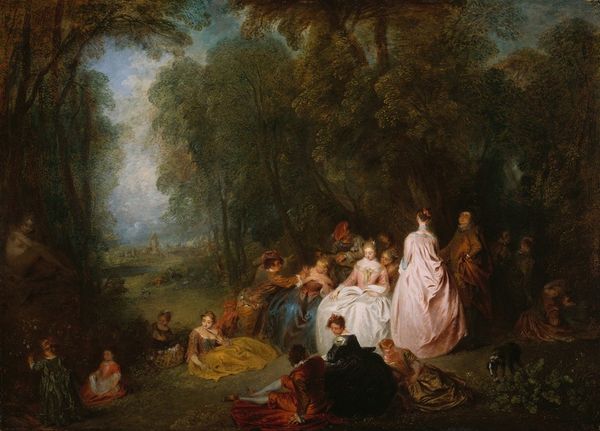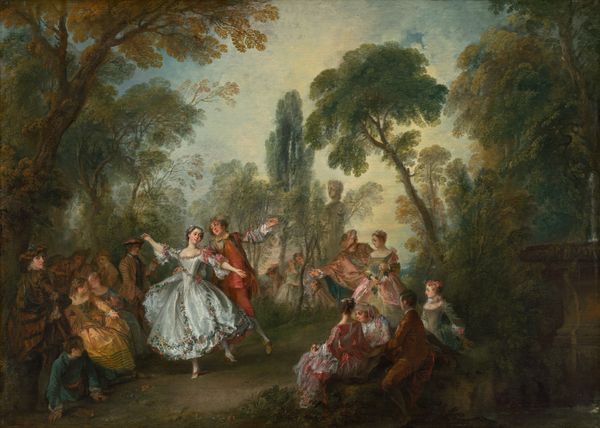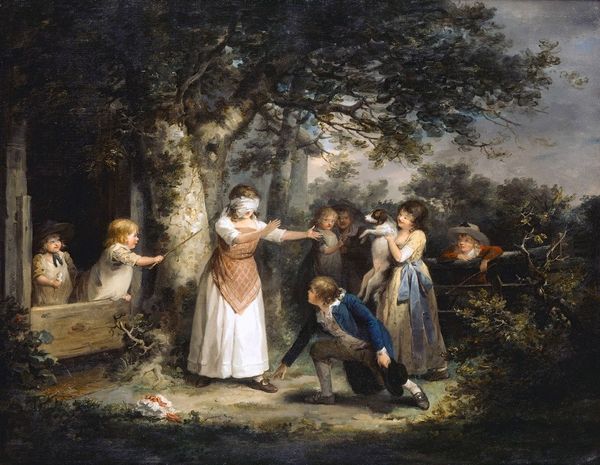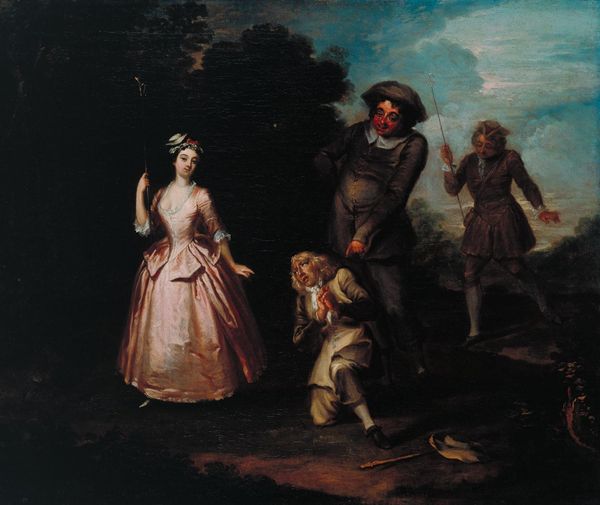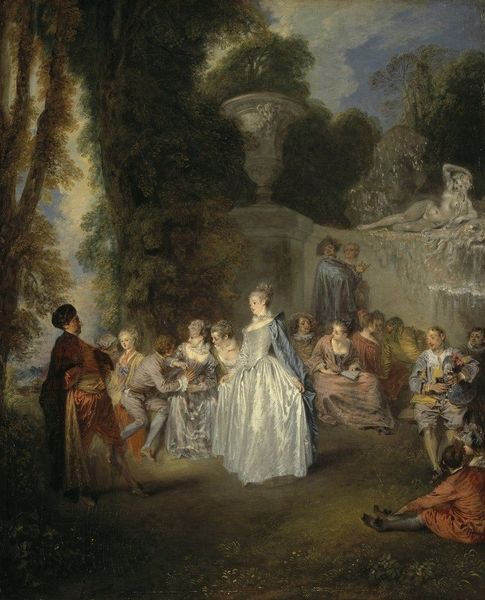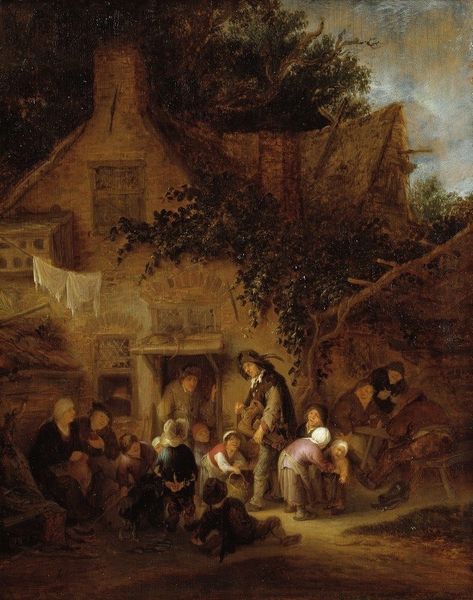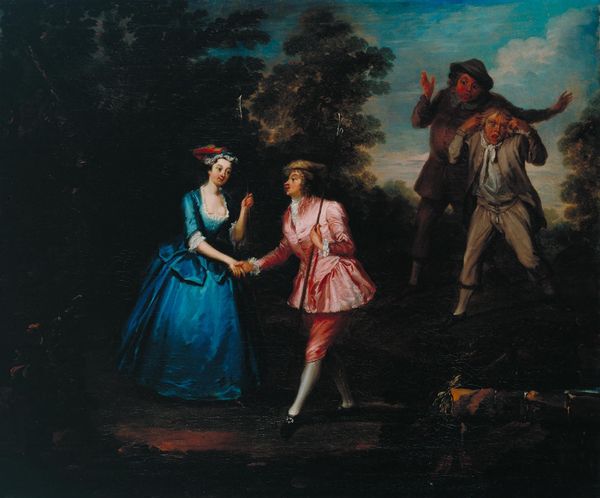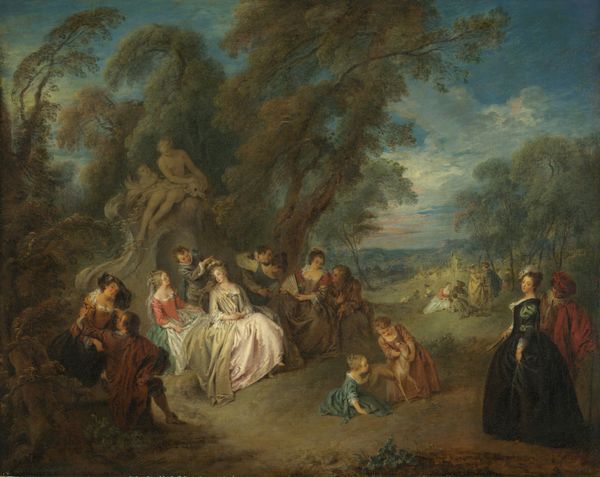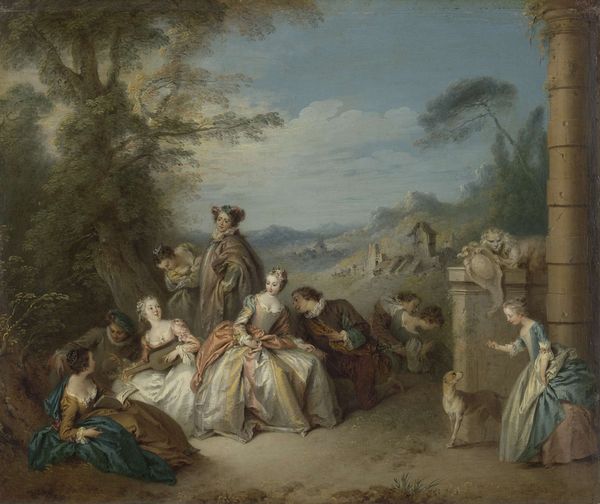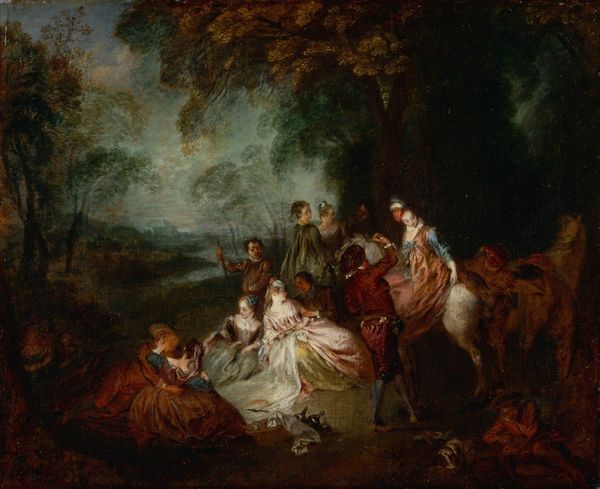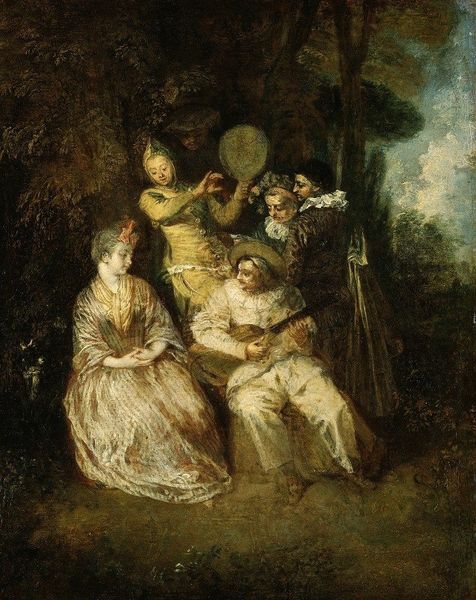
Copyright: Public Domain: Artvee
Editor: We're looking at Jean-Antoine Watteau's "The Country Dance," likely painted between 1706 and 1710, using oil paints. The brushwork appears very loose and gestural, and I love how he balances the figures with the landscape. What catches your eye in this composition? Curator: Note the careful articulation of forms achieved through subtle tonal variations rather than sharp lines. Watteau constructs depth by modulating the colours – observing how the greens of the foliage subtly shift, creating a spatial recession. The arrangement of figures follows a distinct rhythm, leading the eye through a carefully constructed choreography. Have you noticed the triangular arrangement? Editor: Now that you point it out, yes! The dancers at the forefront and the musicians in the background create that geometric shape. How does this deliberate structure inform the overall narrative, if at all? Curator: Think of it in terms of organizing space. Watteau masterfully distributes visual weight – notice the contrast between the brighter colours of the dancing figures and the darker, more subdued tones of the background, pushing them forward while integrating the musicians within the tonal spectrum of the wooded backdrop. Editor: So, he uses the colour to organize the visual planes as a function of the pictorial structure? That's so interesting! Thank you for highlighting these aspects. Curator: Of course. Close visual inspection reveals how art can act independently of its historical framework, generating formal meaning for the observer. It is by understanding the materiality of Watteau’s paint application and composition that allows us entry to experience a rich, artful perspective.
Comments
No comments
Be the first to comment and join the conversation on the ultimate creative platform.
